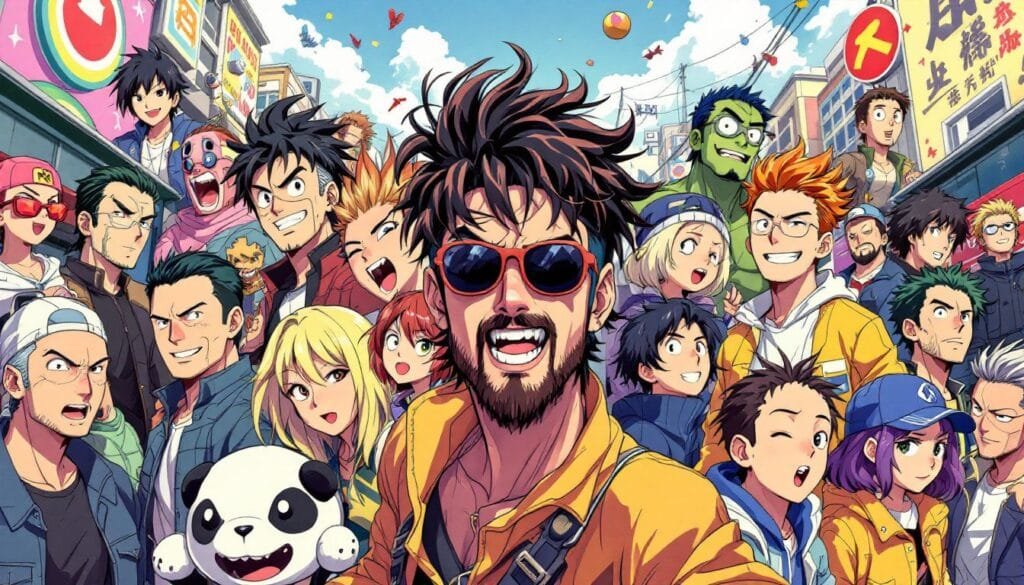No products in the cart.
Futanari Comics
The Rise and Evolution of Futanari Characters in Modern Comics
The Rise and Evolution of Futanari Characters in Modern Comics
Table of Contents
- The Origins of Futanari: Where It All Began
- Futanari in Western Comics: A Cross-Cultural Exchange
- The Cultural Impact of Futanari Characters
- Futanari Tropes and Themes in Modern Comics
- The Future of Futanari in Comics
When you hear the word "futanari," what pops into your mind? For many, it conjures up images of characters that defy traditional gender roles, combining elements that challenge the norms of sexuality and identity. Futanari characters have carved out a unique niche in the realm of modern comics, captivating audiences with their complex portrayals and tantalizing stories. But how did we get here? In this blog post, let's take a deep dive into the evolution of futanari characters in modern comics, exploring their origins, cultural impact, and the ways they continue to shape narratives today.
The Origins of Futanari: Where It All Began
Futanari's roots can be traced back to ancient mythologies and artistic expressions, but it wasn’t until the late 20th century that they began to gain traction in contemporary media.
Early Influences
- Japanese Art: The concept of futanari has historical precedents in Japanese art and literature, particularly during the Edo period. Artists explored themes of gender fluidity, often depicting androgynous figures in their works.
- Mythological Figures: Deities and mythical creatures in various cultures have also provided a backdrop for gender-bending narratives. For instance, some deities in Hinduism embody both male and female characteristics, mirroring the duality seen in futanari.
The Birth of Modern Futanari
- Manga and Anime: The explosion of manga and anime in the 1980s and 1990s brought futanari into the spotlight. Works such as "Aitsu no Daihonmei" and "Kisetsu no Shokutaku" introduced characters that played with gender norms, allowing readers to explore sexuality in new ways.
- Doujinshi Culture: The rise of doujinshi (self-published works) also contributed to the popularity of futanari. Creators often experimented with characters who defied conventional gender boundaries, leading to a proliferation of diverse narratives.
Futanari in Western Comics: A Cross-Cultural Exchange
While futanari originated in Japan, their influence has seeped into Western comics, creating a fascinating cultural exchange.
The Emergence in Western Media
- Indie Comics: Independent artists began to incorporate futanari elements into their works, often embracing the freedom of self-publishing. This led to a variety of interpretations, ranging from comedic to serious narratives.
- Webcomics: The digital age has allowed for an explosion of webcomics that feature futanari characters, often appealing to niche audiences that crave representation.
Notable Works
Here are some standout examples of futanari representation in Western comics:
- "Futa on the Beach": A playful, beach-themed comic that mixes humor with fantasy elements.
- "Futanari Fantasy": An adult-oriented comic that explores relationships and adventures in a magical realm.
- "Gender Bender": A series that plays with gender identity and societal expectations through the lens of futanari characters.
The Cultural Impact of Futanari Characters
Futanari characters have not only entertained but have also sparked conversations about gender and sexuality in modern society.
Challenging Gender Norms
- Fluid Identity: Futanari characters often challenge the binary understanding of gender, presenting a more fluid approach that resonates with many readers.
- Representation Matters: As society becomes more accepting of diverse identities, futanari characters provide a way for individuals to see themselves reflected in media.
Conversations Around Sexuality
- Exploration of Desire: Futanari stories often delve into themes of desire and sexuality, allowing for a safe space to explore fantasies that may be stigmatized in mainstream discourse.
- Empowerment and Liberation: For some, engaging with futanari narratives can feel empowering, offering a chance to embrace aspects of their identity that may be marginalized elsewhere.
Futanari Tropes and Themes in Modern Comics
As with any genre, futanari stories often rely on familiar tropes and themes that resonate with audiences. Let’s explore some of them.
Common Tropes
- The Gender Bender: Characters who shift between genders, often leading to comedic or dramatic situations.
- Fantasy Elements: Many futanari stories embrace fantastical worlds, allowing for more imaginative explorations of identity.
- Love Triangles: Romantic entanglements where futanari characters navigate complex relationships, often with both male and female partners.
Themes to Explore
- Identity and Self-Discovery: Characters often embark on journeys that lead them to understand and embrace their gender identity.
- Acceptance: Themes of acceptance, both self-acceptance and acceptance from others, are prevalent in many futanari narratives.
- Desire and Relationships: Futanari characters frequently explore varied and complex relationships, delving into the nuances of attraction.
The Future of Futanari in Comics
As society continues to evolve, so too does the portrayal of futanari characters in comics.
Trends to Watch
- Increased Visibility: With the rise of diverse storytelling, futanari characters are becoming more visible in mainstream comics, breaking away from niche markets.
- Intersectionality: Future tales may explore intersections of race, sexuality, and gender, enriching the narrative tapestry of futanari characters.
- Collaborative Projects: Expect to see collaborations between artists and writers that will push the boundaries of what futanari stories can be.
Conclusion: Embracing the Evolution
The evolution of futanari characters in modern comics reflects a broader cultural shift towards acceptance, exploration, and celebration of diverse identities. As these characters continue to grow and evolve, they offer readers a chance to engage with complex narratives that challenge traditional views on gender and sexuality. So, whether you're a die-hard fan or just curious about this fascinating genre, there’s no better time to dive into the world of futanari. Explore new stories, engage with different perspectives, and embrace the evolution of these captivating characters. Who knows? You might just find a new favorite comic along the way!
Ready to take your understanding of futanari characters to the next level?
Don't miss out on our exclusive guide that will help you explore diverse narratives and understand the cultural implications of these characters!

